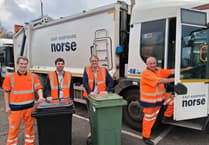Many houses in East Hampshire are, what estate agents would call, artisan dwellings. This is code for a cheap, poorly constructed home that would have been considered suitable for the lower classes at the time.
But over the years they been well maintained and improved. Many have had the insulation brought up to current standards. Simply insulating can lead to problems, such as mould because all draughts are excluded. A solution is to install a controlled ventilation system that matches the individual needs of each individual house.
Every house needs an individual whole-house retrofit survey to ensure problems like mould are avoided. Typically a whole-house retrofit, to get to top class thermal efficiency, needs an investment of around £40,000. It is truly shocking that new houses are still being built to standards below this top level rating. They will need to be retrofitted, costing thousands of pounds. It is especially shocking as to build to the highest standard adds only around two per cent to the cost.
In fact it is unacceptably shocking. The government could have made simple tweaks to the building regulations years ago. This would have meant that houses were built to the highest standards.
The very small extra cost for the new buyer is repaid, very quickly, by reduced heating bills. The saving then goes on for ever. No doubt it was considered as “green crap” by the Conservative ex-Prime Minister David Cameron or simply green by the anti-green warrior Rishi Sunak.
This is an absolute necessity. But it will have little effect compared to the existing housing stock of about 28 million poorly insulated homes. Around 50,000 are in East Hampshire. The council recently ran a scheme to help bring these 50,000 up to standard. It attracted just 11 successful applicants.
The East Hampshire District Council recently passed a joint Liberal Democrat/Green Party motion that the council’s operation should be carbon neutral by 2035. The council itself is responsible for around one per cent of greenhouse gas emissions in its district. But it can influence around 40 per cent of the district’s emissions. Getting all homes in the district to a high level of thermal efficiency with a whole-house retrofitting programme is where it can have the biggest impact.
Retrofitting 50,000 homes presents a huge task. There are majors challenges. Perhaps the biggest is providing suitable finance. Sufficient numbers of whole house-retrofit surveyors must also be created. A pool of competent installers must be built up and a viable supply chain established.
The East Hampshire Green Party has a plan. The council would offer a one-stop shop for information and advice on all aspects of whole-house retrofits.
But it would also offer a commercial service. This service would do everything needed to retrofit a house to the highest possible grade of thermal efficiency and lowest emissions.
Long-term loans would mean that reduced energy bills would pay for the work. The council’s commercial enterprise would take a profit from its work. A win for residents and the council.





Comments
This article has no comments yet. Be the first to leave a comment.